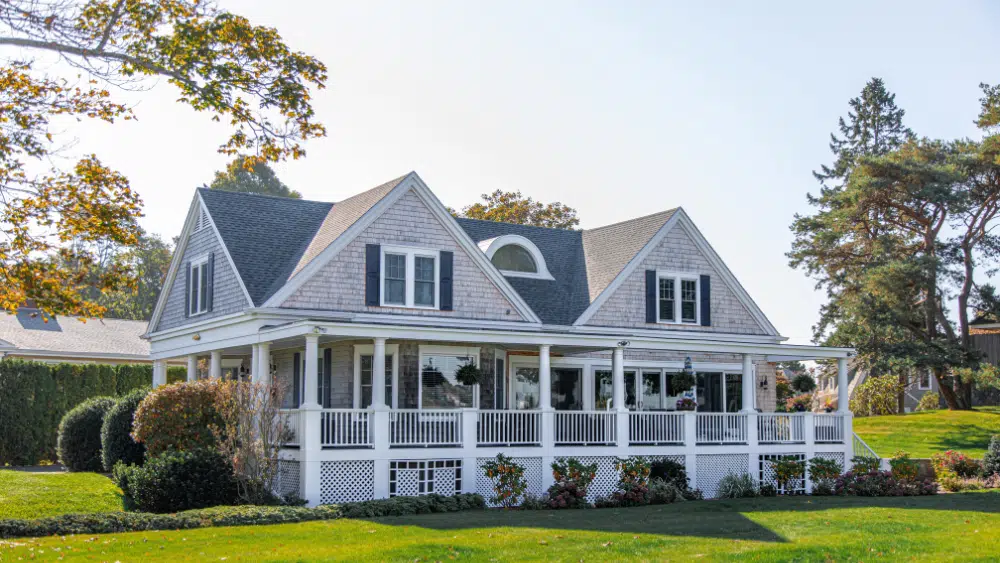
Demolishing your existing home to rebuild the property of your dreams isn’t for the faint of heart – or for those with a tight budget.
Your family home will be reduced to rubble and in the meantime, you’re on the hook for the demolition bill! But whether your house is on its last legs and needs to be torn down or you’re ready to design a home customized precisely to your needs, sometimes home demolition is the right solution.
Homeowners taking the plunge and deciding to tear down their property may be wondering how much the full project will cost. Ultimately, the final cost comes down to the square footage of your home, where in the country you’re located, and a handful of decisions you’ll need to make along the way, such as choosing between deconstruction and mechanical demolition.
If you’re scoping out the cost of home demolition, here’s a look at the cost breakdown and how much you should be saving for this sizable project.
1. Take Stock of Pre-Demolition Costs
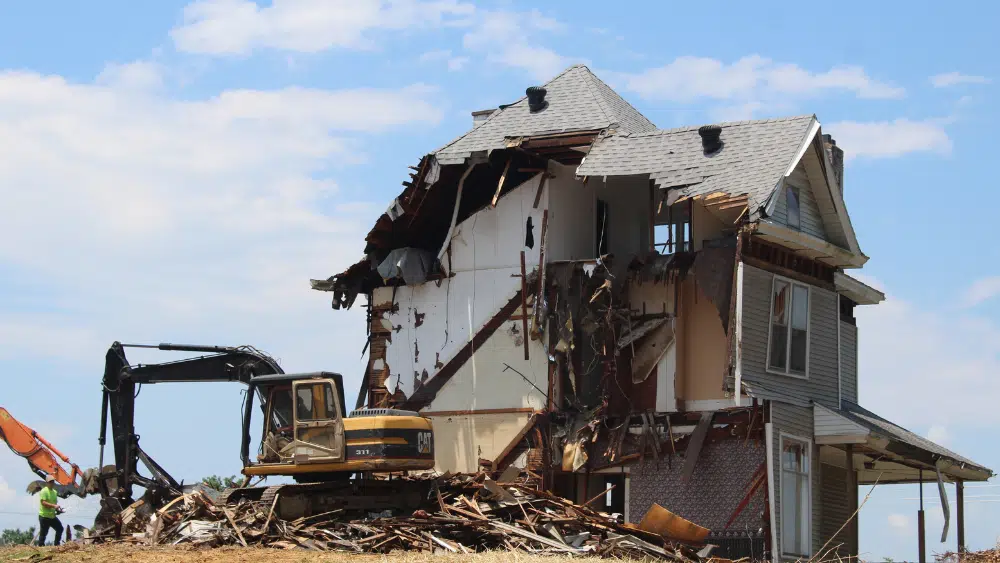
Yes, long before a wrecking ball crushes into the brick walls of the exterior of your home, you’ll have already settled a few invoices. We’re talking about:
- City and county building permits
- Home inspections
- Insurance policies
- Initial deposits with your contractor
- Administrative paperwork, such as environmental testing, pest control sign-off, and other reports
For starters, check your local government’s website for the list of permits and permissions you’ll need in hand before any construction work can begin – on both tearing down your home, and rebuilding. You may be asked for precise details on the demolition, from project duration to how you plan on removing and recycling the debris.
Your local city or council authorities will also order a home inspection, which you’ll need to pay for, so both parties understand if your existing home has any hazardous materials, such as asbestos, lead paint, rotted wood, or mold.
To cover your back during the project for unforeseen delays or other surprises during the demolition, you’ll need a robust insurance policy. Make sure you’ve vetted your contractor carefully, ensuring they’re properly insured and licensed as well. They may expect an initial down payment for their demolition work.
Estimates for this pre-demolition work vary so vastly to the tune of as low as $2,500 to as high as $30,000, hinging primarily on how much permits may cost you. For example, if you’re currently living in a multi-story home that’s decades old, you may end up paying $8,000 or more on permits, asbestos testing, and other regulatory checkpoints.
2. Choose Your Demolition Approach
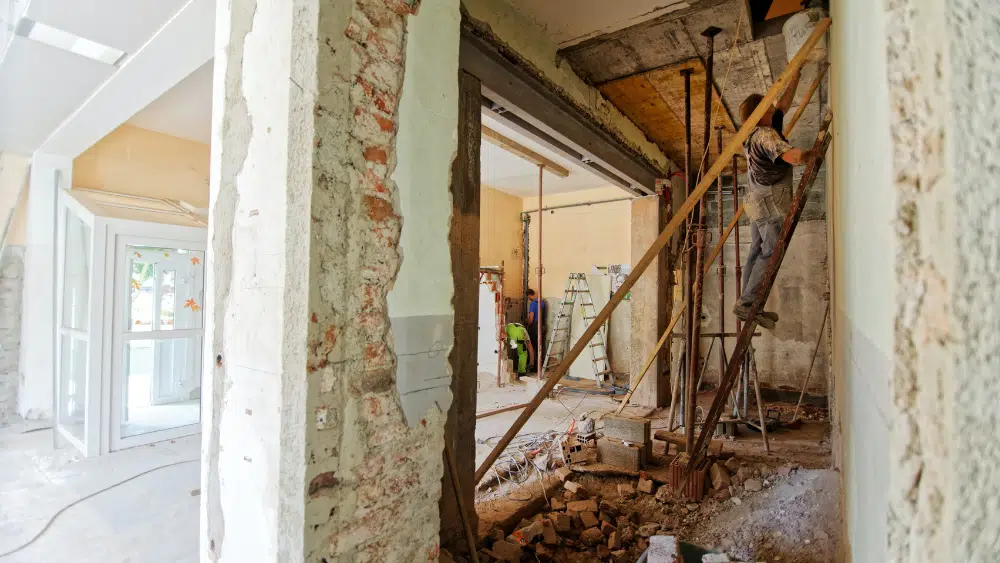
One of the first decisions you’ll need to make during your home demolition project is which approach you’ll take for tearing down your home: deconstruction or mechanical demolition.
Which route you take will significantly affect how much your demolition project will cost you. Deconstruction is going to cost approximately 25 percent up to as high as 50 percent more than a standard mechanical demolition.
Here’s why: with a deconstruction, your home is demolished manually, room-by-room, with a focus on salvaging as much as possible to be recycled, according to the National Demolition Association. This hands-on approach is much more sustainable, but it’s time-intensive, and labor-intensive, which drives up the cost.
On the other end of the spectrum, mechanical demolition is the traditional route most homeowners take. With this approach, regulated contractors use hydraulic excavators and other heavy machinery to tear down your house. You’re left with far less to reuse or repurpose, though.
3. Consider What Materials Your Home is Made Of
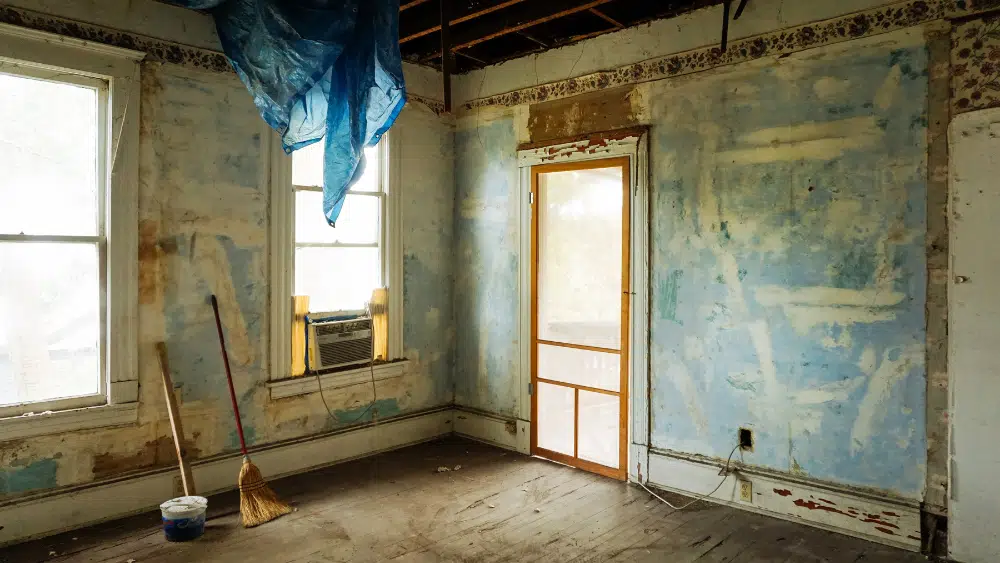
Experts say demolition is just 10 percent of the tear-down process. The remainder? Hauling the debris out of your lot and cleaning the space up. This portion of the demolition comes with a hefty price tag, too, depending on what materials your contractor needs to move off your land.
Here’s a closer look at what you may be dealing with cost-wise:
- Metal at roughly $2 per square foot: hands down, contractors will say that metal beams and structures are the easiest to demolish – and recycle. Metal beams are usually welded together and easy to take apart with an excavator. Because they’re much easier to recycle, this will drive down your disposal costs, too.
- Wood at roughly $5 to $7 per square foot: most homes have wooden structures incorporated throughout the property’s bones. These are also easy to dismantle during the tear-down but because they’re harder to recycle, you’ll be on the hook for higher disposal costs. Local landfills categorize wood as construction debris, one of the most expensive loads to dispose of.
- Bricks at roughly $5 to $7 per square foot: just like wood, brick walls are easy to take apart, but they’re also classified as construction debris, making this another pricey portion of the clean-up process.
4. Estimate the Cost of Removing Construction Debris
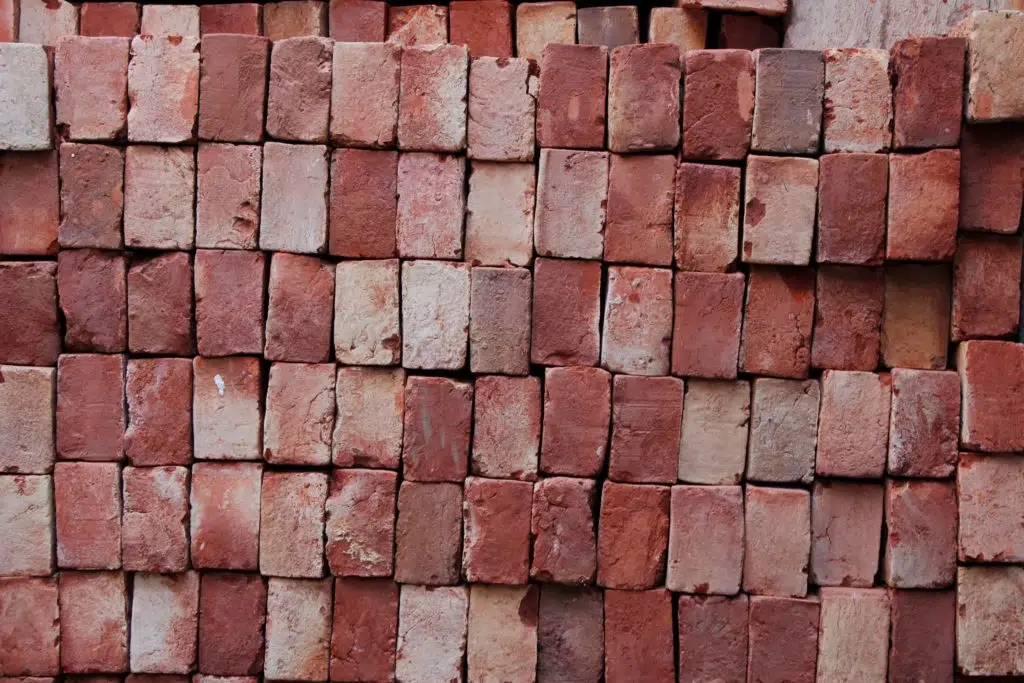
With a better understanding of the materials you’ll be salvaging and which you’ll be hauling off-site and to a landfill, work with your contractor to estimate roughly how much you may be spending on debris removal.
Typically, your contractor will let you know if their fees include disposal and clean-up of the site.
Some estimates suggest that it costs about $400 to $800 for each truck full of debris, depending on where you live in the country.
If you’re hauling away a brick house, anticipate spending far more than your neighbor who may be tearing down a wooden structure.
5. Prepare for Unforeseen Costs
Homeowners should have some buffer room in their budget for unforeseen expenses, such as finding asbestos, rotting wood, or lead paint during the home inspection.
Coming across hazardous materials means your contractor will need to take extra precautions to safely remove and dispose of these contaminated portions of your home.
It’s safe to say that a mechanical demolition of a home with substantial asbestos comes with a price tag of about $20 to $30 per square foot, compared to about $7.50 to $12 for a home without this contamination.
A home tainted with lead could drive up the cost to tear down and remove contaminated materials to as high as $25 per square foot.
6. Do Some Number-Crunching Based on the Size of Your Home
The size of your home and its key features will be another major consideration when you’re trying to figure out how much demolition will cost you.
If you have a detached garage, a swimming pool, a backyard deck, a chimney, or a basement, count on the cost of tearing down your property to increase.
Homeowners who opt for a renovation instead of a full demolition pay for partial tear-down and removal costs. To help you with your budgeting, these features typically come with price tags of about:
- Detached garage: $1,000 to $5,000
- Front porch or backyard deck: $1,000 to $2,250
- Above-ground swimming pool: $300 to $2,500
- Inground swimming pool: $4,000 to $10,000
- Chimney: $3,000 to $5,000Chimney: $3,000 to $5,000
All in, experts provide a range for typical home demolition, free from water damage, asbestos, lead, or pests. The averages look like this:
- 1,200 square feet home: $4,800 to $18,000
- 1,500 square feet home: $6,000 to $22,500
- 2,000 square feet home: $8,000 to $30,000
- 2,500 square feet home: $10,000 to $37,000
It’s worth noting the National Association of Home Builders says the average single-family home is about 2,338 square feet as of March 2022.
7. Put All the Components Together
Each factor listed above will affect where your demolition cost will fall on the price spectrum. Ask yourself:
- How much will permits cost me in my city or county?
- Will I opt for deconstruction or a mechanical demolition?
- What materials is my current home made of and how much could construction removal cost me based on this?
- Will my contractor have to deal with hazardous materials, slowing down the demolition process and driving up the cost?
- How big is my home and are there extra features that may cost more to demolish and remove?
- Where in the country am I located?
Geography plays an important role in the process. Expect higher labor costs in bustling city centers compared to rural areas. You’ll also pay a premium if you’re located far from nearby disposal sites or if your home isn’t easily accessible for excavators and other equipment your contractor will need to bring in.

Carmen Chai is an award-winning Canadian journalist who has lived and reported from major cities such as Vancouver, Toronto, London and Paris. For NewHomeSource, Carmen covers a variety of topics, including insurance, mortgages, and more.
 Best State Parks in New Hampshire
Best State Parks in New Hampshire
Iris Smith
Thank you for mentioning that specifics on the demolition, such as the project’s length and your plans for clearing and recycling the material, may be requested. My mother wants to demolish her home so that she can construct a new one. I’ll advise her to find out the specifics of the demolition, such as how long it will take and how the debris will be removed.